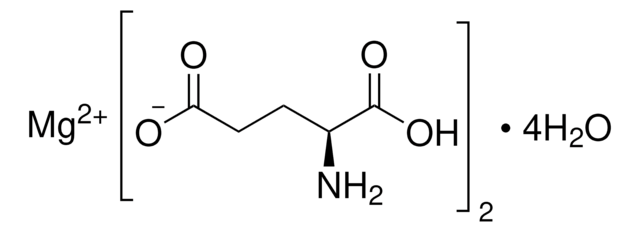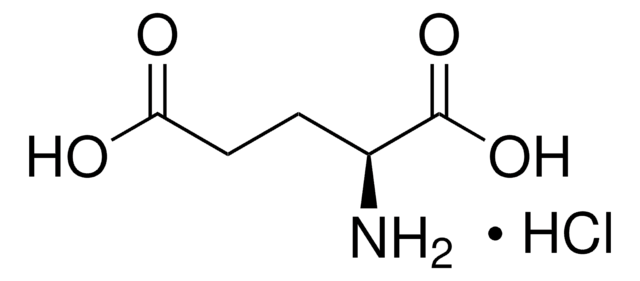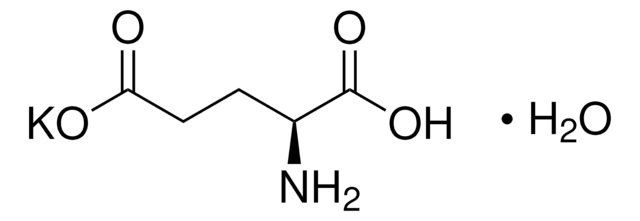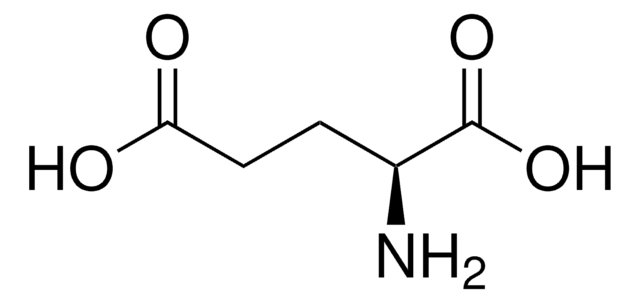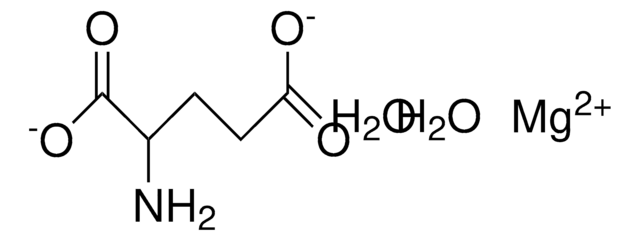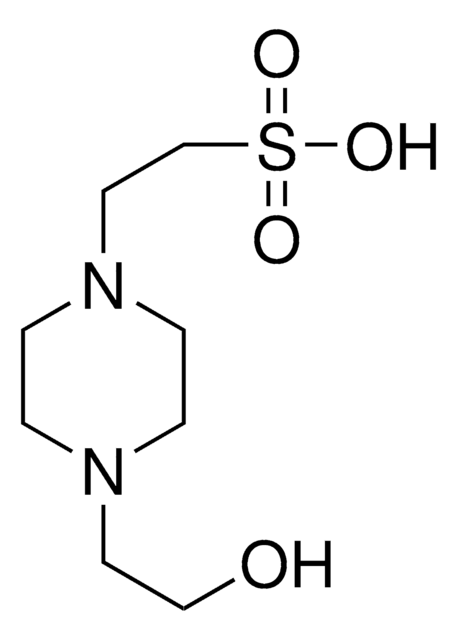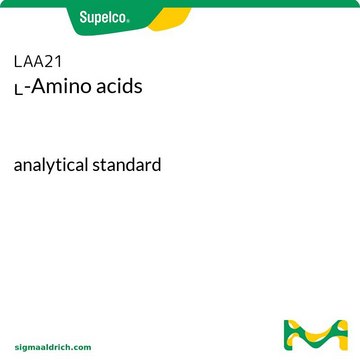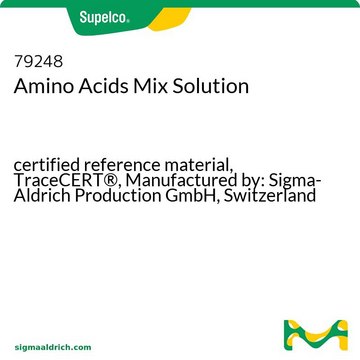G1376
L-Glutamic acid ammonium salt
≥99% (TLC)
Synonym(s):
(S)-2-Aminopentanedioic acid ammonium salt, Glu
Sign Into View Organizational & Contract Pricing
All Photos(1)
About This Item
Linear Formula:
C5H8NO4 · NH4
CAS Number:
Molecular Weight:
164.16
MDL number:
UNSPSC Code:
12352200
PubChem Substance ID:
Recommended Products
Assay
≥99% (TLC)
SMILES string
N.NC(CCC(O)=O)C(O)=O
Biochem/physiol Actions
Agonist at kainate, NMDA, and quisqualate glutamatergic receptors; an excitatory amino acid neurotransmitter.
L-Glutamic acid is a natural α proteinogenic amino acid use in a wide range of research application including use as a cell culture supplement, enzyme substrate or receptor ligand. L-Glutamine is an agonist at kainate, NMDA, and quisqualate glutamatergic receptors and an excitatory amino acid neurotransmitter.
Regulatory Information
新产品
Choose from one of the most recent versions:
Certificates of Analysis (COA)
Lot/Batch Number
Don't see the Right Version?
If you require a particular version, you can look up a specific certificate by the Lot or Batch number.
Already Own This Product?
Find documentation for the products that you have recently purchased in the Document Library.
Sandra Stoppelkamp et al.
Journal of neuroscience methods, 194(1), 132-138 (2010-10-19)
The cultivation of pure neuronal cultures is considered advantageous for the investigation of cell-type specific responses (such as transmitter release and also pharmacological agents), however, divergent results are a likely consequence of media modifications and culture composition. Using Fura-2 based
M E Flores-Soto et al.
Neurologia (Barcelona, Spain), 27(5), 301-310 (2012-01-06)
To review the physiology of the glutamate receptor subunits such as N-methyl-D-aspartate (NMDA). Glutamic acid (Glu) is the major excitatory neurotransmitter in the central nervous system which interacts with two types classified into two types: metabotropic and ionotropic. Ionotropic receptors
K Sugiyama et al.
Neuroscience, 32(3), 779-791 (1989-01-01)
Several reports have described apparently normal survival and development of hippocampal and spinal cord culture preparations grown in Ham's F-12 medium, which contains 100 microM each of L-glutamate and L-aspartate. As at this concentration these amino acids are neurotoxic, some
Jennifer C M Lau et al.
Molecular vision, 19, 1538-1553 (2013-07-24)
This study investigated changes in the transcript levels of genes related to glutamate neurotransmission and transport as diabetes progresses in the Long-Evans rat retina. Transcript levels of vascular endothelial growth factor (VEGF), erythropoietin, and insulin-like growth factor binding protein 3
Yohei Okubo
Brain and nerve = Shinkei kenkyu no shinpo, 65(6), 651-658 (2013-06-06)
Glutamate is the major excitatory neurotransmitter in the mammalian brain. The conventional view is that glutamate mediates synaptically confined point-to-point transmission at excitatory synapses. However, glutamate has also been suggested to escape from the synaptic cleft and mediate volume transmission
Our team of scientists has experience in all areas of research including Life Science, Material Science, Chemical Synthesis, Chromatography, Analytical and many others.
Contact Technical Service